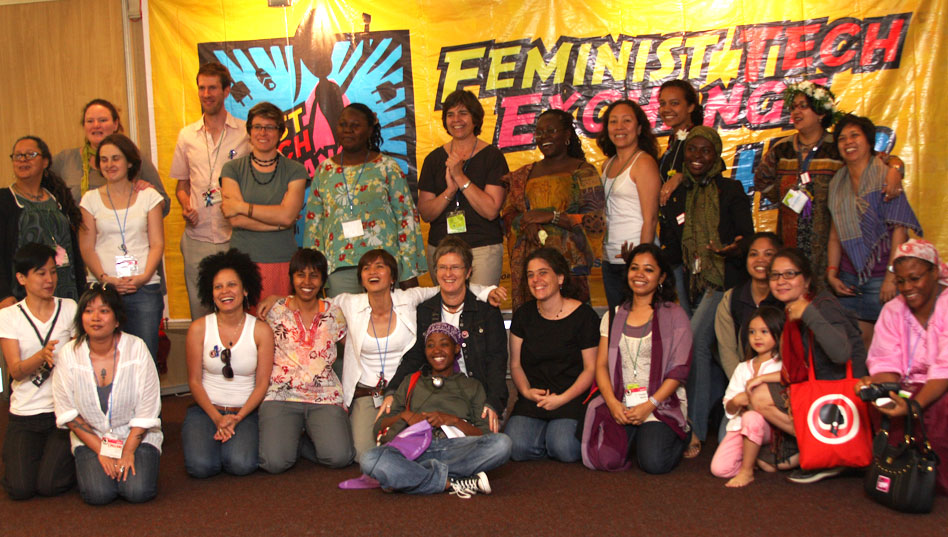Feminist Practices and Politics of Technology
The Feminist Practices and Politics of Technology is an approach to running technology-related activities. We know that a feminist practice of technology cannot be devoid of a feminist analysis of the politics of technology. The Feminist Practices and Politics of Technology are a set of principles that put the politics into practice! These principles can help you choose what activities to include in your conversation, and also help you decide on the best approach for carrying those activities out.
Why are the Feminist Practices and Politics of Technology important when hosting a conversation about the Feminist Principles of the Internet?
-
Like the FPIs, these principles ensure that the experiences of women, gender-diverse and queer folks with technology remain at the centre of our exploration and interrogation of technology and its development.
-
When these principles are applied to how we run our activities, they ensure that those activities are not only about the technical or practical elements of technology, but mainly about the political, social, economic and cultural paradigms that shape and affect the technical and practical elements.
-
Finally, these principles remind us that how we teach about technology must be adapted to the needs and priorities of those who are learning – not the other way around – and consider the diversity of ways in which knowledge and experiences are shared.
Feminist Practices and Politics of Technology core principles
Participation and inclusivity:
-
Since you as the facilitator have as much to learn from your participants as they do from you, design your conversation in a way that encourages exchange and discussion! This gives space for different opinions and experiences to emerge.
-
Remember there are various ways of learning and communicating! Choose activities that accommodate different learning styles.
Safety:
-
Create an environment where participants feel safe to ask questions, raise issues and feel they can share information without being rejected, belittled or divulged without their consent. Discuss with folks what they need to feel safe when going through your event’s Principles for Participation (Chapter 2)
-
Take time to go through the risks associated with using digital technologies. Before embarking on a new activity, participants need to be informed of possible dangers, such as risks to their privacy when using social networking sites, for example.
-
Integrate care into the practice of activities. Remember that care looks different for different people, and depends on who we are and where we are located in our lives and contexts. Be mindful of any stress that shows up in the room and address it where possible, so that everyone can show up fully for the collective during each activity.
Grounded in participants’ realities:
-
Base conversations on the needs and realities of your participants. Take into account the contexts of your participants, the kinds of technologies folks use, and the ways in which they experience technology when deciding on what activities to include.
Appropriate, sustainable technologies:
Transparency and openness:
-
Remember that you have your own agenda when hosting a local conversation. Make your goals apparent to your participants.
-
When planning the agenda of your conversation, include processes in which the expectations and goals of participants are surfaced and integrated into the agenda. These processes can take place either before or at the start of your event.
Creativity and strategy:
-
Use the conversation as a space to look at technologies strategically and creatively! Figure out collectively how folks can appropriate them in ways that enhance their activism and lives.
Emphasis on the roles of women, gender diverse and queer folks in technology:
-
Be aware that many folks have been erased from the histories of technology. Your conversation is the perfect space to correct this misrepresentation. When talking about technology, highlight the contributions that women, gender diverse and queer folks have made to technology development. Ask participants of some of the women, gender diverse and queer folks they know who have shaped technology! Raising these examples is a powerful way of showing participants how much technology is meant for and is shaped by women, gender diverse and queer folk around the world.
Emphasis on our control of technology:
-
Do not be hesitant to dive deeply into the ways in which you and your participants can take control of the internet and technologies.
-
Provoke curiosity among participants around how technologies work – not only how they can be used – by integrating hands-on tech activities into your conversation agenda.
Fun!
-
Simply put, have fun at your event! Remember that having fun is political, because it breaks down barriers that negatively affect folks’ relationships to and control over technology. Fun enables ownership of technology and our online spaces and sustains curiosity and joy.
Now that we know how to frame the way we talk about technology with our participants, and how to approach the selection and facilitation of activities, let’s take a look at a few examples of hands-on activities designed and practiced by feminist trainers from around the world!


No Comments